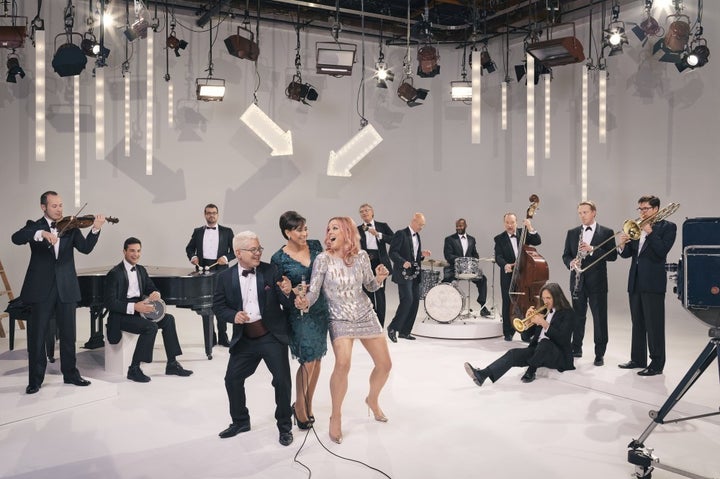
Pink Martini’s ninth studio album, Je dis oui! (out November 18) features “The Butterfly Song,” one of today’s exclusives. It was written by Alex Marashian with bandleader and founder Thomas Lauderdale.
According to the Pink Martini camp...
"‘The Butterfly Song’ pays homage to Robert Schumann’s piano suite ‘Papillons’ (Butterflies), and is a delightful and bittersweet ode to the outdoors. Sung by China Forbes, ‘The Butterfly Song’ tells the story of a butterfly who is captured in a net, brought home where the narrator tries to make it happy, but dies. The lesson learned is: ‘If you love a butterfly, if you love it let it be.’
Alex Marashian is a longtime collaborator with Pink Martini. According to the group’s Thomas Lauderdale...
“Like China Forbes, I met Alex Marashian at Harvard. We were all in the same dormitory – Adams House, the artsy, international, politically far left, gay oasis that was unlike any other place on the Harvard campus. It was like going to a completely different college altogether. Alex, an Armenian philosophy major from Fresno, California, influenced me in huge ways. He introduced me to the films of Federico Fellini, the piano works of Scriabin and Rachmaninoff, French pop singers like Phillipe Katerine. The first time I ever went to Paris was because Alex Marashian kidnapped me during spring break of 1990.
“After college, Alex moved to Europe and became editor-in-chief of Colors, the way-ahead-of-its-time magazine published by Olivier Toscani and Benetton. Alex conceived and directed the award-winning video we made in 1999 for our French hit, “Je ne veux pas travailler.” He co-produced our fourth album Splendor In The Grass, and he and I wrote many of the songs on that album. In August, we finished writing this song, one of many songs we’ve started but never completed.”
Alex Marashian adds...
“‘The Butterfly Song’ is truly a butterfly song. It came to us. It flitted away. Then, when we had forgotten all about it, it came back and landed in our lap.”
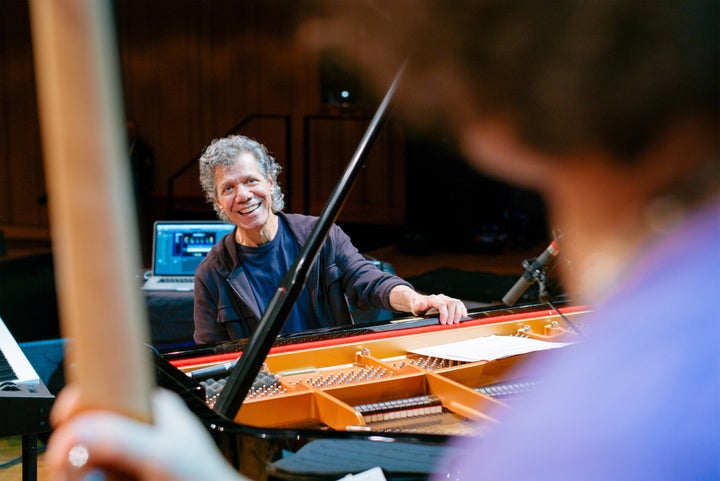
A Conversation with Chick Corea
Mike Ragogna: Chick! What do you like best about performing in a live environment as opposed to recording?
Chick Corea: Hey Mike! Well, it’s the audience. Performing live there’s an audience there participating—big difference from the recording environment. Live is ephemeral—not indelible, except in everyone’s experience and memory. The communication is all happening now in present time. In recording, you’re making a “document” that’s then fixed. That’s why I prefer recording “live”—because it documents the energy that a live performance has. It can capture that great vibe between the performers and the audience. Even when you don’t “see” the audience on a live recording, you can feel the commitment and spontaneity of the players.
MR: The Blue Note is one of the most prestigious live venues in the world and is a New York landmark. As the performer, what are the nuances or special aspects of performing there versus other great venues?
CC: Ah, Greenwich Village New York City. What a vibe. A constant flow of visitors from all over the world come through NYC to The Blue Note. The most international audiences I’ve ever played for. Some nights I'll ask, “Who’s here from France? Italy, Japan, South America, and so on, and often it turns out that a good 70% of the audience is from out of town. The club has a great atmosphere and a great staff that are devoted to presenting the music.
MR: You’ll be presenting 80 shows over eight weeks beginning October 19 and endingDecember 11. That’s a pretty strong statement about your endurance, no? How do you keep up your Mad Hatter skills through the years. See what I did there?
CC: Well, I just take it one night at a time and try and keep my daily sleep and nutrition discipline in. There’s such a great reward every night, creating on stage with my friends and for the audiences. It’s energizing, keeps me wanting to play more.
MR: Chick, you’re probably not comfortable thinking about yourself in this way, but to be able to attract audiences to an 80 show run in New York City, you have to at least have a reputation for being one of the best. Where I’m going with this is you’re a living jazz legend, along with some of your guests, of course, which we’ll get to. But being a living jazz legend in the House of Dave Brubeck and Thelonious Monk among others, you’re one of the jazz keyboardists holding those big reigns now. Are you ever conscious of that and if you are, do you feel any responsibility to the tradition, either by preserving certain elements of it or by expanding it?
CC: I’ve always been proud of my jazz tradition. My Dad Armando was a jazz trumpeter and was steeped in the bebop of the '40s and '50s. That was my start—listening on 78rpm vinyl to Bird and Diz—a teenage Miles playing with his hero Charlie Parker, and Bud and Monk. I’ve always connected with other like-minded musicians and friends, and through the years, the awareness of a real culture makes me feel part of a team that has a message and a mission. I just want to keep doing that. The internet workshops that I’ve been creating are my way of expanding my contribution, by being able to help musicians and anyone interested in jazz and in music. I can reach a lot of musicians, artists and interested music lovers through the internet. I love to help other musicians and I love to teach without evaluating for the student and telling him what he should think.
MR: Obviously, with a vast catalog like yours and your intense improvisational abilities, each show will probably be a unique presentation. How will you approach the set lists and when you bring guest artists such as Herbie Hancock and John McLaughlin on stage, will the spotlight be more on their material?
CC: Each band and collaboration is different and unique. On my piano duets with Herbie, Brad Mehldau, and Gonzalo Rubalcaba, for instance, most of the set will probably be improvised with no prepared set list at all. With bands that are reunited, having repertoires that I’ve already written for, I’ll draw most of the set list from that bunch of arrangements. And my whole intent is to absolutely feature everyone who comes to play. When I play with John and Herbie, I always love to play their compositions.
MR: Over the years, you’ve collaborated with so many iconic jazz artists and as you know, you’re considered one of the greats. Are there any other musicians beyond Herbie and John who you look forward to performing or recording with when the opportunities present themselves?
CC: Gee, it’s a long list, but these things seem to develop naturally through reaching out to one another in various ways. For instance, Phillip Bailey came to sing a tune with the Elektric Band recently in LA and we had such a good time, he wrote me to ask if I’d like to do some recording with him. I immediately said yes and now we’re going to schedule some time to record together.
MR: Since it seems most great artists always are evolving, what is influencing your musical direction these days? How would you describe your evolution?
CC: Well...if anything I just stay interested. My interest in getting involved with music and musicians on a lot of different levels is high, so that’s probably how I evolve. I follow my interest.
MR: You’ve returned to Return to Forever over the last few years. Will you possibly dedicate at least one of the nights to the group’s music? Might there be other themed nights?
CC: Yes, in fact the last two weeks of the eight weeks at The Blue Note will be featuring some of RTF’s music. From RTF 1, the music from the first Return to Forever recording called “Return to Forever” and the 2nd one called “Light As a Feather”; From RTF 2, which I think of as the electric RTF, we’ll play compositions from “Hymn of the 7th Galaxy” to “Romantic Warrior.”
MR: What is driving you creatively these days? What’s inspiring you musically or otherwise? And what brings you the most joy?
CC: It seems to me that interest in life is self-created. It’s a personal thing. I think interest is close to inspiration. When I’m highly interested, I’m at the same time inspired. It seems to start from within and then goes onto whatever I’m getting interested in. Tonight as I write this from Nashville, I’ve got my new Yamaha Montage keyboard in my hotel room, trying out new sounds. It’s so interesting and full of surprises I want to continue all night. I’m programming some different sounds for tomorrow night’s performance here with the Elektric Band. I feel the most joy and the happiest when I'm totally busy working on my music. In this way, I feel like I have a charmed life.
MR: What are your thoughts about jazz music in 2016? Where do you see it heading?
CC: It’s a wide open track really. So many musicians around the planet are learning and developing the beauties that are part of the jazz tradition. The experimentation is extremely wide, broader than I’ve ever seen. New ideas are being exchanged so much faster because of our modern communications technologies, the phone and the internet, etc.
The great jazz musicians like Duke Ellington, Miles Davis, John Coltrane, Monk were all...oh, you could say Renaissance men. They set the bar high on the importance of having an independent attitude toward existence. This attitude is native to every human being but buried in most so it takes these great artists to remind us to create and to create using our own imaginations. That’s how they continue to inspire me. That’s our tradition. And, as I travel and meet musicians around the world, I see that that tradition is certainly alive and well. It’s the antidote to any downtrending negative condition.
MR: Chick, the traditional question! What advice do you have for new artists?
CC: Well, the short answer is: all advice is “cheap advice” in a sense, since the advisor just advises and gives his opinion, whereas the advisee has to do it and accept all consequences.
That said, my advice to a new artist is to keep his own mind and trust his own tastes and judgment. Not an easy thing to do without some practical knowledge of life. But if you survey the great, successful and long-lasting artists, that’s the trait that remains constant. It’s way more important than trying to be original because each individual is already “original.” Can’t help it. So to “try” to be original just invalidates what you’ve already got. My “rule #1” for all new artists—and really for anyone trying to live a creative life—is to learn to think for yourself and trust your own judgment. I always ask a young student “What sounds good to you?”
MR: Here’s a not-so traditional question that I’ve always wanted to ask but I understand it’s a delicate subject. What is your relationship with Scientology these days and how would you say it affected your creativity over the years? Might you have an example?
CC: Well, I've been an active member of the Church since 1968 when I began studying and applying the unique spiritual technology that L. Ron Hubbard developed. I've always taken great joy and pride in lending my support to the many social betterment programs that the Church continues to create around the world.
For me personally, when I'm successful at applying the simple but powerful basics of Scientology technology, I keep unlocking more abilities that were previously hidden to me—my understanding of myself and others increases—and I always see new paths to try out, new artistic territory to conquer.
As I improve and accomplish more, learn how to help others more, the joy of living factor goes up and up. I love my “job” more and more, and so want to keep traveling and playing my music for people everywhere. This upcoming 8 weeks at the Blue Note will be a perfect opportunity to do just that.
MR: What do you still need to get to creatively? Have you considered applying the Chick Corea touch to opera or Broadway? That’s a joke, of course, but maybe not?
CC: Composing new music is the most fun and the most engaging part of what I do. I would love to be able to create the time to write larger works. I've already composed two piano concertos and a bunch of chamber music, but there's so much more I'd like to tackle. Actually, I would love to compose a musical work for a show on Broadway, something that would have great live musicians and engage the audience in an active way. Thanks for the nudge.
MR: Beyond playing 80 shows at The Blue Note, what else is on your agenda for the near future?
CC: Well, I’m preparing music for 2017 and also for 2018. Next year, I’m putting together a project with my old friend Steve Gadd. We made some fun records in the '70s: “The Leprechaun,” “Mad Hatter,” “My Spanish Heart,” “Three Quartets” and others. We plan to make a recording of brand new music with a brand new band and then tour in the fall and winter of 2017. In 2018, I’m preparing my piano concertos and some other classical works to play with orchestras around the world. I’ve also got an experimental electronics project that I’m almost finished with and will release this next year. That’s a few things...
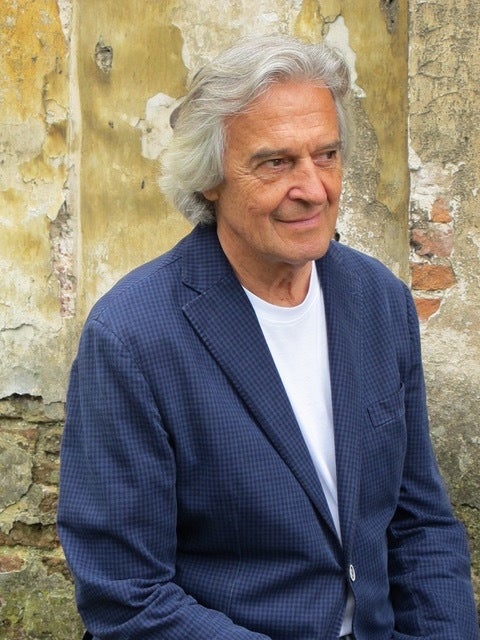
According to the John McLaughlin gang...
“Coming later next year, the first extensive US tour in nearly a decade with the internationally renowned master guitarist, John McLaughlin. The tour is being billed as his farewell to the U.S. Confirmed tour dates coming soon.
“McLaughlin’s spectacular career spans more than five decades, he is heralded as one of improvised music’s most influential guitarists, composers, and bandleaders. For this run, McLaughlin will be joined by the remarkable Jimmy Herring, a maestro in his own right as one of the best rock/jam guitarists in America. The Meeting of the Spirits tour will feature separate sets by Herring and McLaughlin before the duo join forces for an expansive closing jam each night based on classic Mahavishnu Orchestra material. Expect special surprise guests to be added along the route.”
In advance of what will be McLaughlin’s final US tour, the guitar legend shares this message with his fellow Huffington Post readers...
...and we need a little music, right? Here’s a clip from his June 2015 performance with Jimmy Herring.
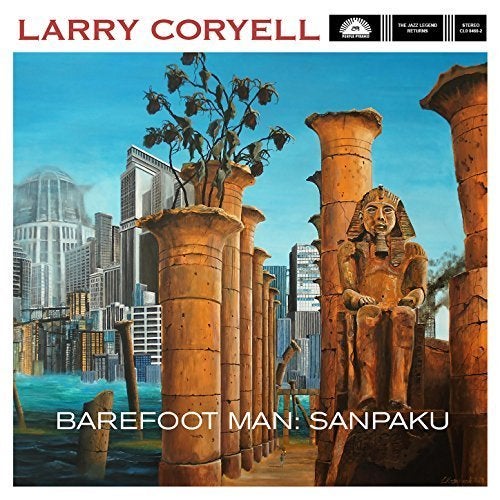
A Conversation with Larry Coryell
Mike Ragogna: Larry, on your new album Barefoot Man: Sanpaku, you seem to be influenced by the ’70s. Was that the intention?
Larry Coryell: Good question and you have good ears. Yes, my publicist John Lappen suggested I do a project that had a spirit similar to an album I did in the ’70s, called Barefoot Boy. There were long improvisations on that record with compositions like "Gypsy Queen" by Gabor Szabo, made popular by Carlos Santana. That concept was a good starting point for Barefoot Man: Sanpaku.
MR: How did the music on this album come together?
LC: The music came together through careful consideration of what I wanted to play, and who I wanted to play it. That's why I settled on the personnel, Lee Pearson, John Lee, Dan Jordan and Lynne Arrialle. I especially wanted Lee on drums because we had been jamming in Indonesia earlier in the year and had struck a great rapport. I always wanted to play "Manteca" by Dizzy Gillespie so this format was the ideal place to do that. All other titles were originals, composed vis-à-vis the abilities of the players. I was very pleased with the way they interpreted the music.
MR: You were part of the fusion movement although your style also included melodic and jazzier overtones than many of your contemporaries. How has your approach to creating music evolved over the years?
LC: Fusion--that has various meanings but the key verb in your question is "evolve." That is to say, the basics of [jazz] music—good "time," playing in tune, swinging—are always adhered to, but there are many choices, especially lyrical ones, that can be made, hence the evolution of one's music. For me, it simply comes with age and experience, where there's less emphasis on pyrotechnics—although impressive technique is a good thing—and an unobtrusive emphasis on "easing up" in the improv in order to leave more space.
MR: Can you take us on a tour of the album from the artist’s perspective? How is the new album a step forward for your creativity?
LC: Well, thank you, re "from the artist's perspective." I like that. "Penultimate" was composed when I was in Beirut several years ago--I like Lebanon. They love jazz. All other tunes were written in the weeks before we recorded. "Improv on 97" was based on my study of Stravinsky; "Back to Russia" was literally a slice of the melody and orchestration from my opera, "Anna Karenina." I write "non-jazz" things so as to delve into them and find fresh approaches to jazz playing. "If Miles Were Here" was based completely on the mentoring I received from Miles back in '78; there is a reference to something Miles produced for me in '78 that surfaces in the new Miles movie. Miles told me to "play less notes" and to "never finish a phrase." I try to remember that. "Blue: Your Mind" was an afterthought and it turned out to be one of the more popular titles on the record. "Sanpaku" is straight "thinking man's" funk and the band really nailed it.
MR: Let’s look at some history. Who influenced you? Can you still hear their influences in your playing to this day?
LC: My influences are many, but basically, Hendrix, Segovia and Montgomery. I listened to everything when I was growing up--jazz and non-jazz--I simply liked music with good composition and/or good playing. I love Stravinsky, Ravel and DeBussy, along others. I love the compositions of Dizzy and Bird as well as Stanley Cowell, John McLaughlin and Chick. Be that as it may, I'm sure listeners can hear those influences coming through in my playing--especially when I play octaves!
MR: Your group The Eleventh House accompanied you on a few albums. How did you and the group create and record music? How does that differ from how you’re approaching creating and recording these days?
LC: Ah, the Eleventh House. What a concept. It was originally based on a concept of friendship, hopes and aspirations. Practically speaking that band became a great platform for the compositions of the band members. Tunes by Randy Brecker, Alphonse Mouzon, Mike Mandel, Mike Lawrence, John Lee, etc., have combined to give a very wide range of styles. Our newest record will come out next year, and the variety of the compositions is quite rich, giving some very rigorous challenges to the soloists.
MR: Interestingly, you were in a group called Foreplay early on, and, of course, you’re familiar with the current jazz group Foreplay.
LC: "Foreplay"--our version, had nothing to do with the Bob James group of the same name. Our "Foreplay" was really the precursor to the Eleventh House. The best player in "our" Foreplay was saxophonist Steve Marcus, who is no longer with us. The recordings are a testament to how great he was.
MR: You basically helped originate the three jazz guitar concept with John McLaughlin and Paco de Lucia, a fusionist trio that Al Di Meola stepped into when you left. You’ve returned to that format, for instance, for 2003’s Live In Chicago project or the Paris Concert in 2004. Why did you leave the original trio and how did you creatively satisfy yourself in that more guitar-competitive environment?
LC: If I may be frank, I left the trio with John and Paco because of a severe drinking problem. I've been sober ever since. Regarding the "way to play" in a three-guitar format, the secret to navigating that is to listen, and listen quickly, because some of the tunes require fast responses. Also, when they play single notes, you go to chords—and vice versa—things like that. It was a great experience with two great players and great friends. I continue to mourn Paco's passing. He was absolutely the greatest pure guitarist that ever lived.
MR: Do you find improvisation playing a bigger role as you’re maturing?
LC: Regarding improv playing a greater role as time goes on, no. Improv's position in any jazz situation has always been the key element.
MR: What do you think of the state of jazz? Do you have any favorite acts that are either popular, emerging, or have been around but under the radar?
LC: That state of jazz is excellent. The schools have really helped the younger players to develop the necessary skills and vocabulary to play. Each emerging generation discovers the "amazingness" of jazz improv and they go after it with great determination. In my case, I just couldn't help myself—I had to try and learn this music. Still trying... As for favorites, they are too numerous to mention, but I think Christian McBride is really doin' it with his group. I like good, swingin' forties-based straight ahead, but I like the avant-garde as well. As long as I hear some kind of music with a capital "M" coming out—Joey deFrancesco comes to mind—it sounds good to me. Under the radar but killin' is the Norwegian guitarist Lage Lund. Unbelievable concept. Kurt Rosenwinkel too. My oldest son Murali is a great Hendrix-Otis Redding concept blues guy and his younger brother, Julian is currently a member of the Eleventh House. They're both great.
MR: Larry, what advice do you have for new artists?
LC: Well--advice to new artists--they actually teach me more that I teach them. When I hear someone young with talent, Veronica Swift, for example, or Daryl Johns, I tell them--keep it up--you're on your way. Our music is in good hands!
MR: What other projects are you working on?
LC: I am currently finishing my opera "Anna Karenina" for a World Premier in Kaluga, Russia in May. I will try to follow that with Joyce's "Ulysses," with which I am about one-quarter way through. Joyce was unbelievable, and, he was a jazz guitarist. The unique and nearly unfathomable depth of Russian literature and music has a large influence on me. I hope someday to perform Stravinsky's "Rite" with four guitars--but that's going to be a doozy, especially when I find more ways to improvise on it.
MR: One last thing. What was your time like with Miles Davis? Do you have a couple of stories you could share?
LC: Glad to share a couple of stories re Miles. My time with Miles was very short--it took place at the end of February 1978 through the beginning of March 1978. Miles had just had a hip replacement in NYC and accepted Eleana Steinberg's [wife of Jimmy Cobb] invitation to come out to a house she had in Norwalk, Connecticut to convalesce. I think his doctors had given him some pain medication to take with him so as to ease his recovery. Eleana was close friends with my wife Julie and they both were crazy about Miles; they were very helpful in making him comfortable out in the country. It was a nice thing for Miles to get out of the city.
Miles did play some guitar--I have a fond memory from around 1966 when he came down to the Village Vanguard to hear Jim Hall; when Jim's set was over, Miles, in a fun way, grabbed Jim's guitar and started strumming--nothing too fancy, but, still, it was Miles Davis, so everybody, including Jim, was digging it. Fast forward to the house in Connecticut in 1978 and Miles is taking my guitar and showing me some Isley Brothers stuff--chords and all, and it was cool. It was the beginning of a composition he was creating for me, although I didn't know it at the time. He was also playing some stuff on the piano, a rather pensive adagio movement with some unusual chords. It was revealed to me a day or so later that Miles wanted to take me and some other musicians into the Columbia Records studio in NYC—it might have been RCA, not sure—and record this new composition of his, with me as the featured soloist.
So, Miles's people organized the session March 2, 1978 and we went in, bassist T.M. Stevens, drummer Al Foster [married to Eleana's sister, Bonnie], George Pavlis and Masabumi Kikuchi on keys, plus there was a synth there for Miles to play. And, in a "here-comes-another-legend-into-my-life" moment, producer Teo Macero was there to supervise the proceedings. I went into the console room to talk to Teo and Miles. Someone, it might have been Julie or Eleana, gave me Miles' trumpet--they wanted him to play trumpet on the recording. I offered it up, but Miles said he wasn't going to play it. We set up, got our respective instruments functioning, and Miles told the rhythm section to play a hip kind of shuffle in a twelve-eight feel. Then he put those Isley Brothers’ "Charleston-rhythm" chords—played by the keys—on top of that groove. Then he said "we will improvise over this." Well, I was taken aback a bit because in Norwalk, in the days leading up to the session, we had rehearsed Miles' aforementioned "adagio" section quite a lot. So I said, "Miles, what about the adagio?"
"F**k the adagio" was Miles' dark-whispered reply. To this day, I think that's the funniest thing I've ever heard in my life. Then I realized that Miles' plan was to lead us in one direction, then switch to something completely different in order to make us play fresh, to avoid cliches. Brilliant. Now it made sense to me when earlier Miles has told me I was a member of "note-a-holics anonymous." We did around 14 or 15 takes, many of which were incomplete, but take 13 was the one Miles liked. Miles had also advised me to "never finish a phrase" in order to create more space, hence: play differently. As we did the takes, Miles would feed me ideas from the synth—it sounded close to his trumpet sound—and I would respond, keeping those "rules" of improv in mind. The musical result was, well, the music speaks for itself, something else I learned from him, and because he had had John McLaughlin in his band, Miles was fond of effects like the wah-wah and the ring modulator. It was not like Jim Hall's pure, warm guitar sound; Miles wanted to use the guitar to go to other sonic locations--a la Hendrix.
I did solos according to Miles' mentoring, and the other guys, especially T.S. and Al, played their asses off. We went back to Connecticut--and Miles' people from Columbia sent up that thirteenth take on a cassette and Miles played it over and over again--he was pleased with the music. He would turn up the speakers and call his friends and say, "listen to this!" He also told me he hoped that Columbia would sign me based on this recording. That's the Miles Davis I knew, an unparalleled artist...and a staunch humanitarian. He threatened to kick everyone out of the Norwalk house if they didn't know Paul Robeson's birthday. I love that. Like so many great bandleaders—Dizzy comes to mind—Miles was serious about developing younger players. The desire to assist the evolution of emerging jazz artists is now a quality I in my life now. Miles gave me that. Osmosis. There was nobody like him. Knowing him, even for a short time, was my great fortune. Long live his music and his creative legacy...Miles was the best!
MR: Larry, from how you saw Miles interact with and care about young artists, what advice did you ever hear him give or might he have told them?
LC: With the younger musicians, Miles always listened very carefully to what they were playing and if he didn't like it, he would tell them. I remember one incident with John Scofield, where he was not happy with what John was doing musically and he told him to change what he was doing. I don't know how John changed his way of playing but I do know that the John Scofield-post Miles, became one of the most original, improvisatorial voices in jazz. When John plays you know it's him and nobody else. I attribute that to Miles' influence.
Also, when Robben Ford was in Miles' band, his playing changed to a more bebop oriented style. Although Robben is known as a blues guy, there was one night at Town Hall when Robben tore through the changes of the bridge to "Caravan" just like Charlie Christian. That has to be attributed to Miles.
STEVE FORBERT’S “OUT IN THE WORLD” EXCLUSIVE
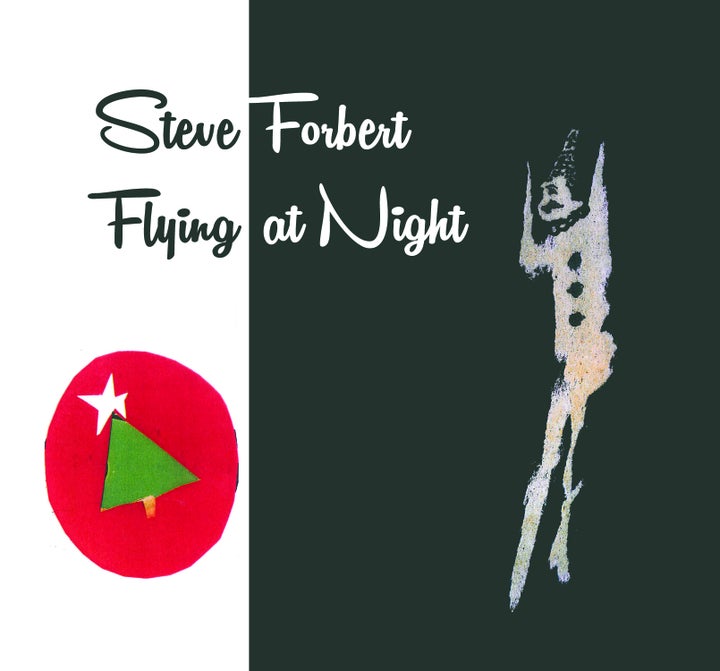
According to Steve Forbert...
“In order to promote the tour I'm currently on in England, I assembled my seventh studio LP, Flying At Night, from lots of recordings I've done through the years with Anthony Crawford. I sang and played guitar on these now finished songs and asked multi-instrumentalist Anthony to add whatever he wanted as producer. Flying At Night will be released in the U.K. only and is also available from my website. Audiences have liked songs from it at recent shows in Holland, Norway and Sweden. I like it, too.
“I've selected track number 8, ‘Out In The World,’ to attach some visuals to. What is this video? It's a drastic edit of a movie a Jersey Shore friend of mine, William DeVisia, directed a few years ago---with me lip syncing in front of it. I think his plot relates fairly well to these ‘world gone wrong’ lyrics.”
For more information: http://www.steveforbert.com/
MICHAEL COLTON’S “BUSTED” EXCLUSIVE
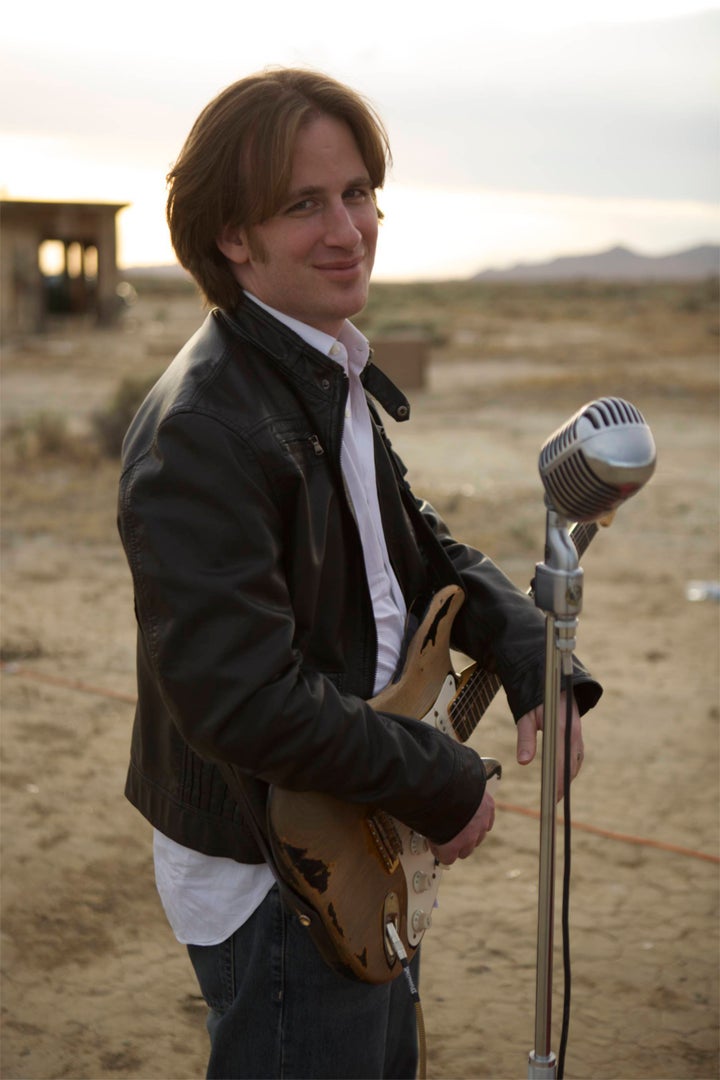
Los Angeles-based singer/songwriter and guitarist Michael Colton shares the video for his new single “Busted.” The song—a twangy, bluesy mid-tempo alt country jam—is the fourth track from his upcoming EP California Blue and the showcase of the batch reflecting Colton’s songwriting and guitar playing. It was produced by Marty Rifkin (who played alongside Bruce Springsteen, Tom Petty, and others) and Steve Trovato, and California Blue will be released at the end of October.
According to Michael Colton...
“The song ‘Busted’ was me coming to terms with starting a music career a little later in life than most. It’s this really introspective song that is wrapped in a catchy package. It’s really the first song I wrote and recorded that felt like it was more than just good enough.”
For more information: http://michaelcoltonmusic.com/
DATURA4’S “HAIRY MOUNTAIN” EXCLUSIVE
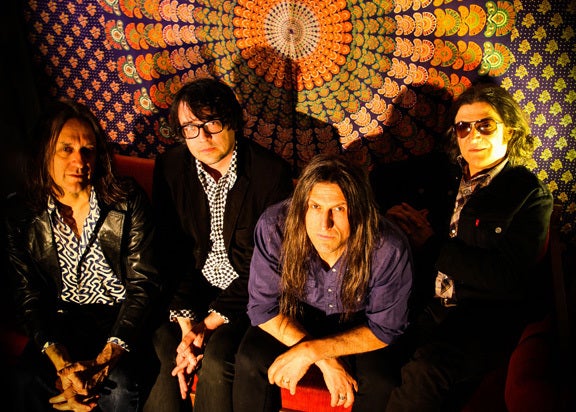
According to Datura4’s frontman Dom Mariani...
"A good friend recently asked where I got the idea for Hairy Mountain. He said the title conjured up something salacious or lewd in his imagination to which I explained that was far from the intention, but more so a homage to our hairy Oz rock forefathers. I said if people want to read into it and come up with their own imagery then that was cool too, but it all started out as some kind of mutant FREE riff set to a Simon Kirke 1/8 groove that I had going on in my head. I played it for a while, searching for a melody and phrasing that would work until the very first line that came out of my mouth was, ‘Making my way down a Hairy Mountain...Hairy Mountain? Ok! I think I know where I’m going with this.
“Drawing on imagery of having grown up and lived on the West Australian coast, things started to flow, taking a left turn and mixing in visions of an alternate universe governed by peace pipe smoking Chiefs, flying spacemen and surfers waiting for the perfect set to break, to convey an optimistic feeling of a better place. I presented it to the band at the next rehearsal and they were like – ‘this is cool!’ What’s the title!? It took a while to knock it into shape, but once we had the groove it became undeniably evident it would be both the title and the centerpiece of our new album. Demon Blues, our first album, opened a door to the song writing possibilities of Datura4 and you can hear it in focus on Hairy Mountain."
For more information: http://www.alive-records.com/artist/datura4/
